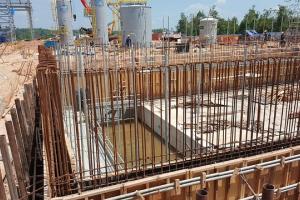Load Capacity Of Piles
Following are general methods available to establish load capacity of piles:
- Static Analysis
- Dynamic Analysis
- Load Testing
- Correlation with field tests (SPT, CPT etc)
Dynamic formulae are used for driven piles. Static formulae are used both for bored and driven piles. Load testing is the most reliable method to determine the load capacity of the pile in the field. They should be performed on all piling projects. However, they are considerably more expensive than the other methods used to determine pile capacity, and economic considerations sometimes preclude their use on projects. Field tests like SPT, CPT are also used to correlate to load carrying capacity particularly for cohesion less soils.
Also See: Types of Piles
Driven Piles:
Dynamic Pile Formulas:
Piles are usually forced into the ground by a pile driver or pile hammer. In medieval times piles were driven by men manually swinging hammer, which consists of a weight raised by ropes or cables and allowed to drop freely striking the top of the pile. After the drop hammer came the single acting hammer, double acting hammer, differential acting hammer, diesel pile hammer, and vibratory driver. Dynamic pile formulas are widely used to determine the static capacity of the driven pile. These formulas are derived starting with the relation.
Energy Input = Energy Used + Energy Lost
The Energy used equals the driving resistance (Pu) x the pile movement (s). Energy lost is due to friction, heat, hammer rebound, vibration and elastic compression of the pile, the pacing assembly, and the soil.
Energy News Record (ENR) Formula:
This formula takes into account the energy lost due to temporary compression (C) resulting from elastic compression of the piles. Thus,
Energy Input = Energy Used + Energy Lost
Wr x h = Pu x s + Pu x C
Pu = Wr h / (s + C)
Where Wr = weight of the ram, h = height of fall of the ram, s = penetration of pile per hammer blow, Pu = average resistance of soil to penetration.
C = 25mm (1 inch) for drop hammer, and
C = 2.5 mm (0.1 inch) for steam hammer (single acting/double acting)
Pa = Pu/SF Where Pa = allowable load on pile and SF = Factor of safety = 6
For single/double acting hammer, the term (Wr x h) can be replaced by ɳhE where ɳh = hammer efficiency (see accompanying table) and E = rated energy of hammer.









